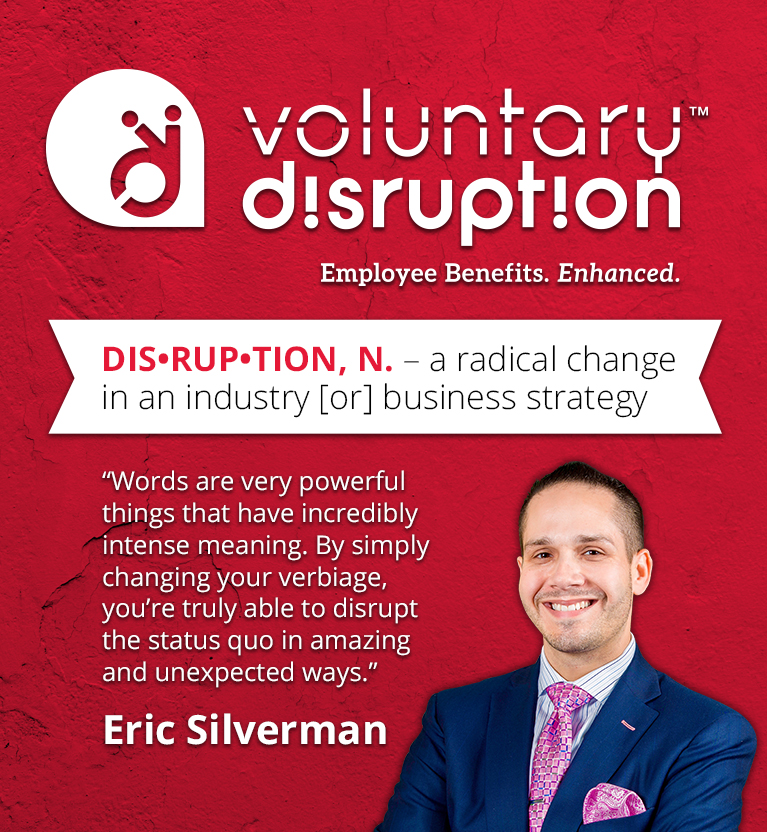Most brokers fall into one of four categories, and two of them could set you up to disappoint clients and potentially lose their business, while also leaving valuable revenue on the table.
Last month, we discussed three best practices to achieve success in open enrollment, but even the best-laid plans must evolve over time to reflect the changing marketplace. This is especially true for brokers who daily navigate America’s complicated healthcare landscape. In fact, I would argue that the most influential disrupter to our industry must be the willingness of the brokers themselves to adjust, adapt and embrace change — and not just because their commissions are at stake.
There are a number of industry-disrupting brokers in group benefits who are consistently developing cutting-edge strategies to transform how their clients view and fund group health insurance. But when it comes to voluntary benefits, or as I call them, enhanced benefits, how do you disrupt a side of the employee benefits industry that isn’t likely to see commissions disappear anytime soon, and where there isn’t as much pressure on a company’s bottom line from rising costs?
Most benefit brokers fall into one of four categories with respect to how they approach enhanced employee-funded benefits:
1) Ignore Them.
They generally avoid the topic altogether unless a client asks about voluntary benefits — which most will not do. If an inquiry does come in, it’s typically prompted by a competitor or a carrier sales rep knocking on your client’s door. This is more of a reactive stance that comes with low risk and minimal revenue growth to the broker.
2) Outsource Them.
They work with a single insurance carrier and their reps who handle everything. While this is a more proactive stance, it does come with higher risk of handing clients off to potentially unprofessional or inexperienced reps, let alone a potential competitor. Further, confusing and non-transparent compensation structures may also result in lower revenue shares and commission splits for brokers. In addition, this approach is not carrier agnostic, which typically prevents customizing plan offerings to the client needs. Product is often placed with little regard to the benefits already installed. This comes from minimal, too often times, no collaboration between the broker and the carrier rep. Still, this approach is widely considered the industry standard. For that reason, it is ripe for the most dramatic disruption.
3) Hire an In-house ‘VP of Voluntary.’
Brokers who take this approach are very proactive and willing to take a risk for long-term revenue potential. However, a return on their investment is heavily dependent upon hiring the right person who can ramp-up sales quickly. Typically, a firm spends more than $100,000 on a base salary, plus sharing commissions, bonuses and general costs of doing business. The upside is keeping 100 percent of the revenue and available compensation in-house. The downside comes with fixed costs and overhead, as well as the need to retain enrollment firms that may charge upward of 80 percent to 90 percent of the total compensation. This approach is the most challenging to execute and make profitable in a reasonable amount of time — leaving a propensity to failure and the broker reverting back to categories one or two.
4) Partner With an Experienced Carrier-Agnostic Benefits Boutique.
This type of partner will likely have staff with carrier and retail experience, so they know how to position the products and expand the client relationship while representing the primary broker’s interests and the interests of their clients. To increase efficiency, the partnering firm should have a large national footprint with access to enrollment distribution and all aspects of service, both pre- and post-install. This proactive approach comes with minimal risk and zero added overhead, while providing high short- and long-term revenue potential. Complete carrier compensation transparency is paramount, and your partnering firm must also hold top carrier contracts with volume-based carrier underwriting offers that extend to the broker, its business, and of course, the broker’s clients.
Embrace Enhanced Benefits
Clients trust their broker with their healthcare decisions. It is time to embrace the enhanced benefits industry. Doing so will allow you to guide your clients properly by eliminating benefit redundancy and wasteful employee overspend, while capitalizing on a new revenue stream. Whether you choose to outsource to one specific carrier, bring it all in-house, or partner with a carrier agnostic firm, I suggest you choose to adopt one of the more proactive approaches, at the very least to prevent losing revenue to cold-calling competitive carrier reps who are regularly soliciting your group clients.
With good reason, your primary client conversations emphasize employer-paid benefits and cost-containment strategies, but don’t lose sight of how implementing a proactive approach to enhanced benefits will round out the complete consultative picture. Consider adjusting your firm’s goal to be more strategic and systematic by bringing enhanced benefits to the forefront of client conversations. This is not only best for clients and their employees, but it’s also a missing revenue stream that can easily be filled.
Never forget, you’re the trusted broker your clients hired to provide well-rounded, unbiased and complete advice on all things benefits related — including enhanced employee-funded benefits. Next month, we’ll dive deeper into all of the products and services available in this market. Until next time, don’t just have a great month – make it a great month!

